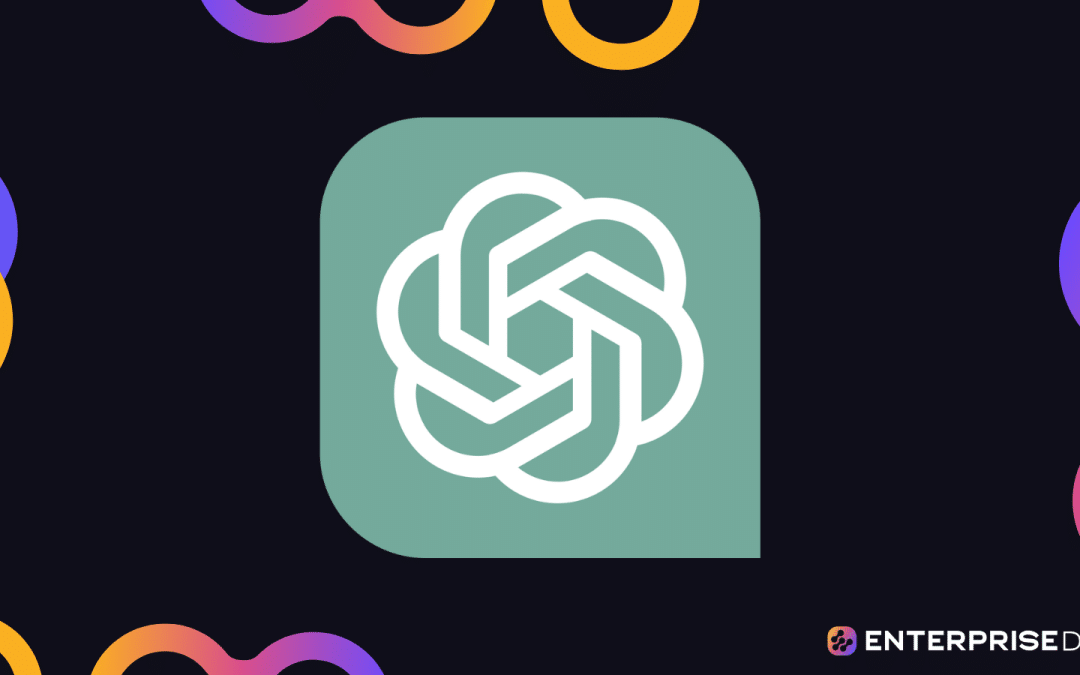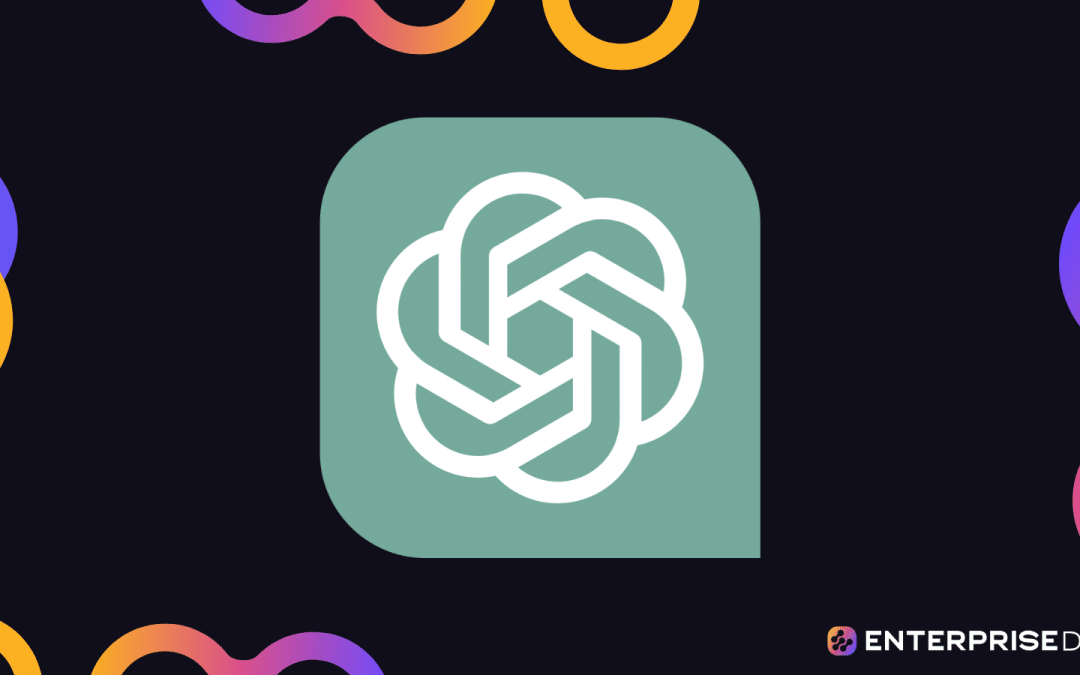Which programming language is this???
Don’t worry; we’ve all been there at some point!
The good news is that a solution comes in the form of a handy little tool called a programming language detector.
This nifty software can automatically identify the language of a given code snippet or file, saving you time and effort in troubleshooting and debugging.
These detectors are not just simple tools; they are sophisticated language identifiers that can parse through various syntax and structures, handling different options from JavaScript and Python to more niche ones like Groovy, Haskell, and HTML.
This article will explore the ins and outs of these detectors, including how they work, why they’re so helpful, and the different types available.
So, stick around as we take you on an exciting journey through the world of coding language detectors!
Let’s get started!
Overview of Programming Language Detectors

Programming Language Detectors are specialized tools to identify the programming language used in a given code.
These tools are handy in environments where multiple programming languages are used or when dealing with legacy code or code without clear documentation.
They analyze syntax patterns, keywords, and other unique code characteristics.
Let’s take a look at some of the advantages.
Advantages of Using Programming Language Detectors
Simplifying Code Management: These detectors simplify managing and organizing code by automatically identifying the language used in development environments.
Facilitating Code Analysis: They enable automated tools and processes to understand and process code correctly by identifying the programming language first.
Enhancing Legacy Code Understanding: For legacy systems where documentation might be sparse or outdated, language detectors help understand and maintain the code.
Supporting Code Repository Management: These detectors help categorize and index code, making navigation and retrieval more efficient for managing large code repositories.
Optimizing Development Workflows: By automatically detecting the language, they streamline development workflows, especially in complex projects.
These tools are essential to modern software development, enhancing efficiency, comprehension, and managing diverse codebases.
Next, let’s explore a practical guide for implementation.
Practical Guide for Implementation
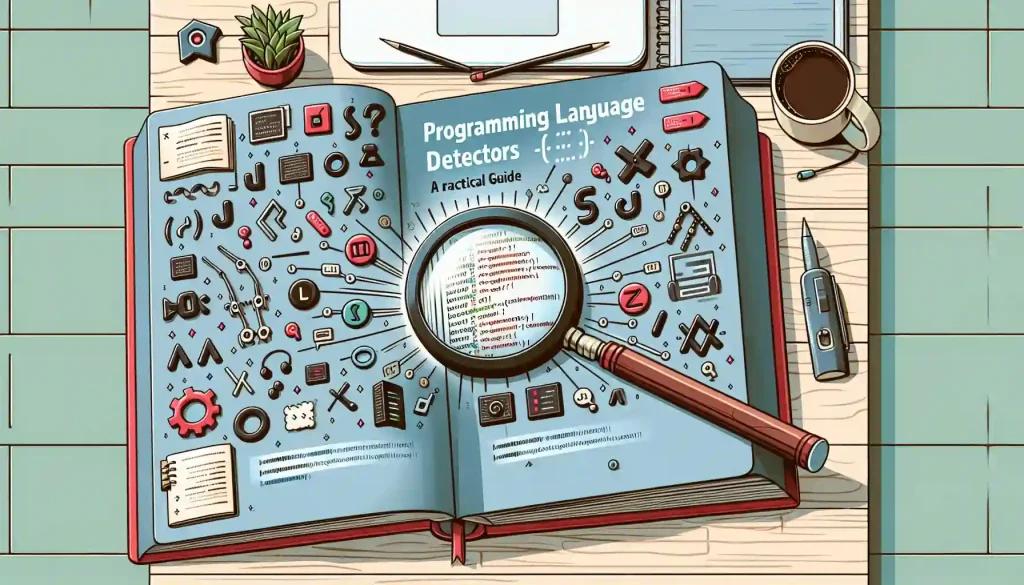
Choosing the Right Tool
When selecting a language detector, consider its support for various languages and integration capabilities with your existing tools. It’s important to note the level of accuracy required for your projects.
For this Demonstration, we’ll select chatGPT to do our language detection.
Let’s illustrate the capabilities of using ChatGPT for language detecting:
Example 1: Identify Python Code
User Input: “Identify the programming language used in the following code snippet.”
Code Snippet:
def greet(name):
print(f"Hello, {name}!")
greet("Alice")Detected Language: Python
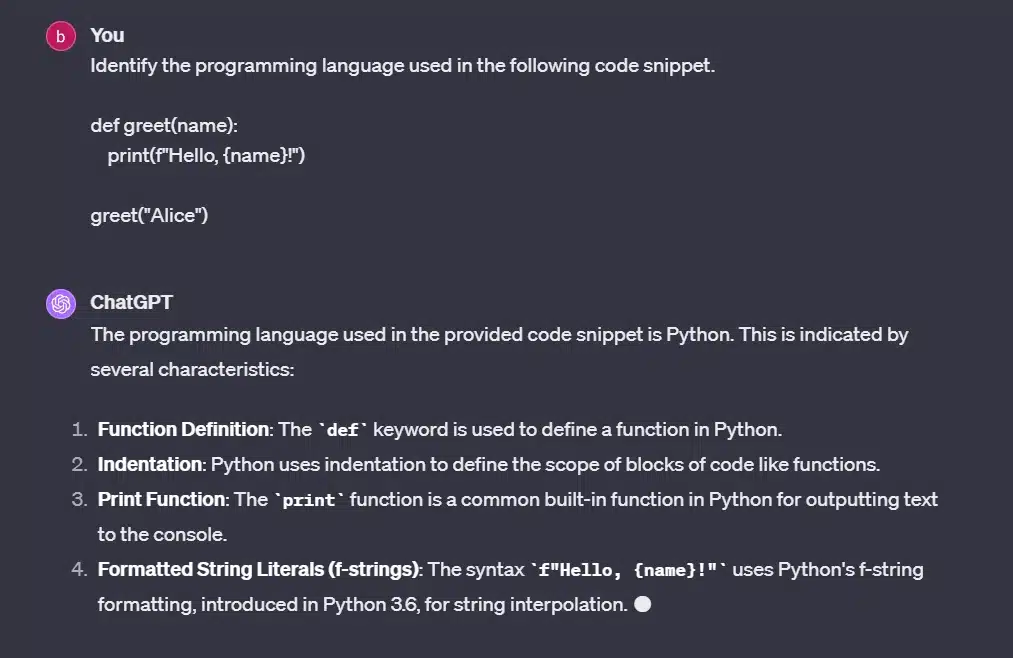
In this example, ChatGPT effortlessly identifies that the provided code snippet is written in Python.
Next up, we’ll look at an example using JS.
Example 2: Identify JavaScript Code
User Input: “Determine the programming language of the following code.”
Code Snippet:
function greet(name) {
console.log(`Hello, ${name}!`);
}
greet("Bob");Detected Language: JavaScript
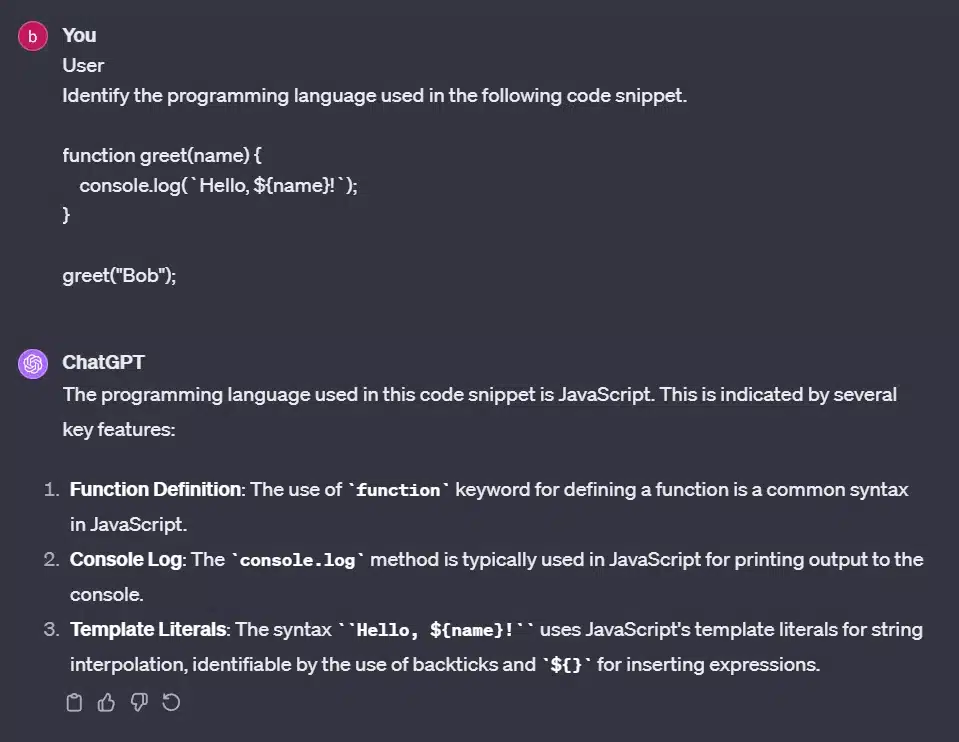
Here, ChatGPT correctly identifies that the given code is written in JavaScript.
Now, let’s see what it looks like with C++.
Example 3: Identify C++ Code
User Input: “Recognize the programming language used in this code.”
Code Snippet:
#include <iostream>
int main() {
std::cout << "Hello, World!" << std::endl;
return 0;
}Detected Language: C++
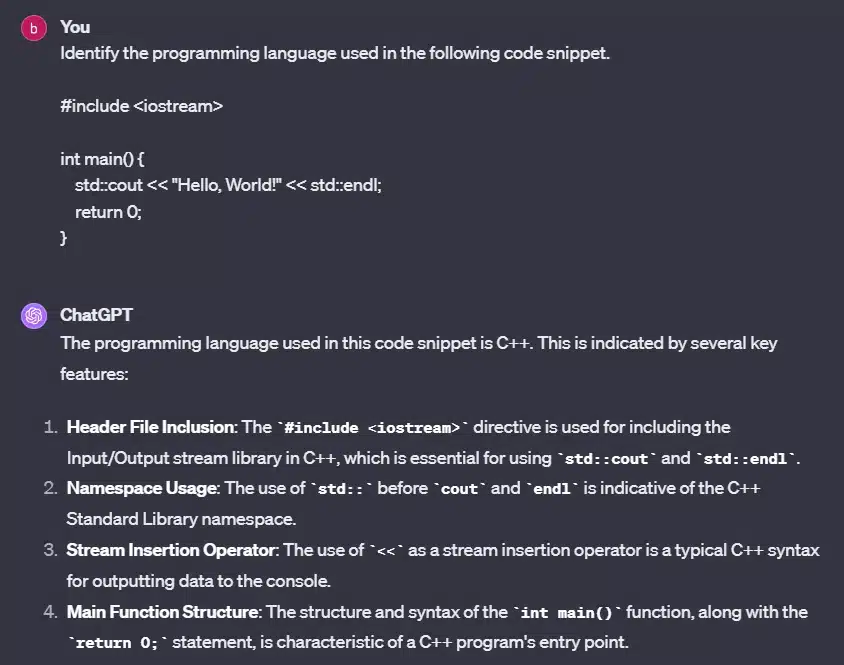
In this case, ChatGPT accurately recognizes that the provided code is written in the C++ programming language.
Moving on, let’s try the language detector with HTML.
Example 4: Identify HTML Code
User Input: “Identify the programming language in this code snippet.”
Code Snippet:
<!DOCTYPE html>
<html>
<head>
<title>Sample Page</title>
</head>
<body>
<h1>Hello, World!</h1>
</body>
</html>Detected Language: HTML
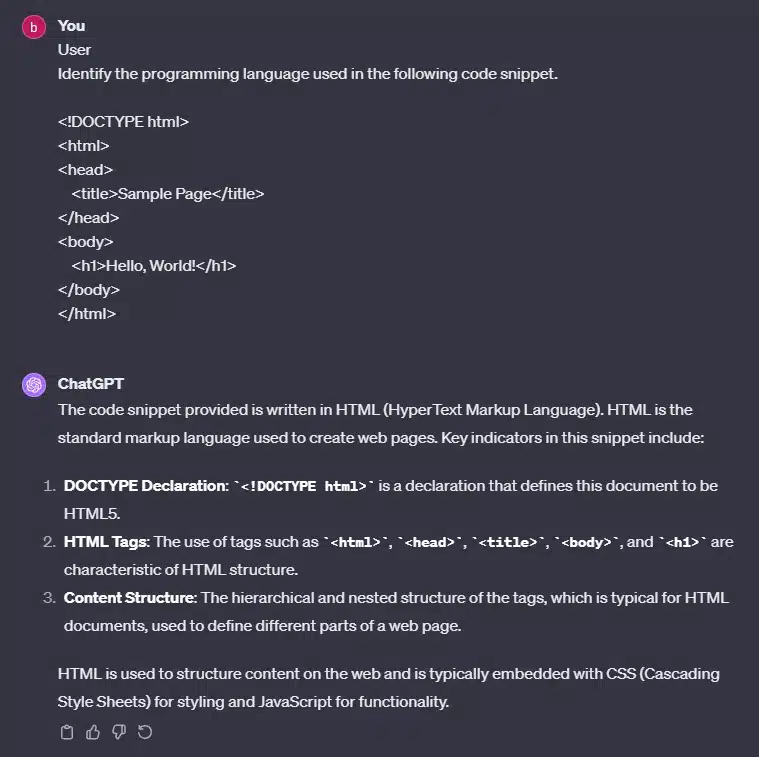
ChatGPT correctly identifies that the code is HTML for creating web pages.
Finally, let’s see how it handles SQL.
Example 5: Identify SQL Code
User Input: “Determine the programming language used in this database query.”
Code Snippet:
SELECT * FROM Customers WHERE Country = 'USA';Detected Language: SQL
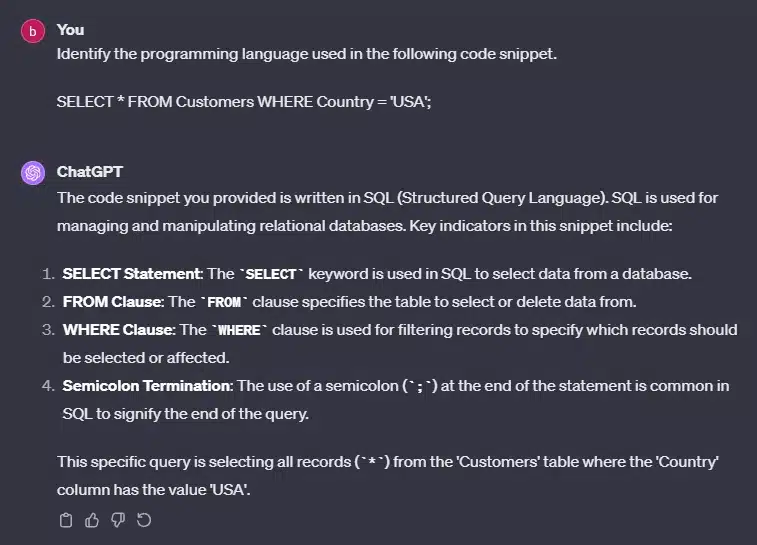
In this example, ChatGPT successfully recognizes that the provided code is a SQL query used for database operations.
These examples demonstrate how ChatGPT can effectively identify the programming language of code snippets, making it a valuable tool for language detection in various programming contexts.
Now that we’ve explored these comprehensive examples, let’s consider the underlying tech.
Technology Behind Language Detectors

Algorithmic Approach
The core of the functionality of a language identifier lies in its ability to recognize patterns. These tools use sophisticated algorithms designed to identify unique characteristics of the code.
These identifiers are adept at making classifications based on syntax patterns, specific keywords, and stylistic conventions, such as curly braces hinting at C or Java.
Moving on, let’s consider the role of machine learning in these detectors.
Machine Learning Models
Machine learning, particularly neural networks, has recently revolutionized language detection.
These models, trained on vast code datasets like Groovy, Haskell, and HTML, learn to identify nuanced differences and can even detect languages in mixed-language code files, a task akin to understanding complex recursion patterns.
Also, these detectors aid debuggers and linters, providing them with the necessary context to apply language-specific rules and optimizations.
This is especially crucial when handling a project’s markdown files or linguist-based categorizations.
While these tools are great, let’s check out the challenges and limitations that arise when using them.
Challenges and Limitations

Detectors are essential tools in code analysis, but they face several challenges and limitations:
New and Undocumented Languages: Identifying newer, undocumented coding languages poses challenges. Detectors need continuous updates to adapt to the evolving landscape.
Resource Intensiveness: Language detection can be resource-intensive, especially for large codebases, impacting performance and response times.
Multilingual Code: Detecting the primary language in code that contains multiple languages or can lead to ambiguous results.
Contextual Ambiguity: Some code snippets may need more context, making it challenging to determine the correct results solely based on a snippet.
Algorithm Limitations: Detectors’ effectiveness depends on the underlying algorithms, which may struggle with particular features or nuances.
Addressing these challenges ensures detectors’ continued reliability and adaptability in code analysis and other applications.
Alright, that’s it for programming language detectors! Let’s reflect on some of our main points.
Final Thoughts

Programming language detectors are essential tools in the evolving software development landscape.
Incorporating advanced algorithms and machine learning models elevates these detectors to a new level of efficiency and accuracy, making them indispensable for developers, educators, and organizations.
Despite their advantages, these tools are not without challenges, particularly in ensuring accuracy and adapting to new programming languages.
As these technologies continue to advance, they promise to refine and enrich the coding experience, making it more intuitive and productive for everyone involved.
Master projection in Power Query/M Language with this expert guide on the enterprise DNA YouTube channel: How To Make Projections In Power Query/M Language.
Frequently Asked Questions
How do language detectors integrate with Visual Studio Code?
Language detectors seamlessly integrate into Visual Studio Code through extensions or plugins. These extensions utilize sophisticated algorithms to recognize and provide comprehensive support for various programming languages in your codebase.
What kind of language support do these detectors offer?
Most detectors offer support for a wide range, such as JavaScript, Ruby, SQL, and Python, as well as less-known ones like Groovy, Haskell, and HTML. The breadth of support varies based on the tool or library used.
Can language detectors analyze code from a website or server source code?
Yes, some language detectors can analyze code directly from websites or servers. They can pull source code from a given URL or connect to a server to access and identify the language used in the codebase.
How does the ‘Guesslang’ tool work in identifying programming languages?
‘Guesslang’ is a library that uses machine learning algorithms to guess the programming language of a given source code snippet. It analyzes the syntax and structure of the code to make its best guess.
Are there language detectors for web development, including HTML and JavaScript?
Yes, language detectors are available for web development supporting HTML and JavaScript. These tools can be handy in mixed environments like web development, where HTML, CSS, and JavaScript often coexist.
Can I use language detectors to find specific libraries or APIs within a source code?
Some advanced tools may also help pinpoint specific libraries or APIs used in the code, especially if they have distinct syntax or usage patterns.
Is it possible to use detectors on GitHub or online editors?
Yes, they can be used across various platforms, including GitHub, where they help categorize repositories. They can also be integrated into online editors to provide real-time language detection.







